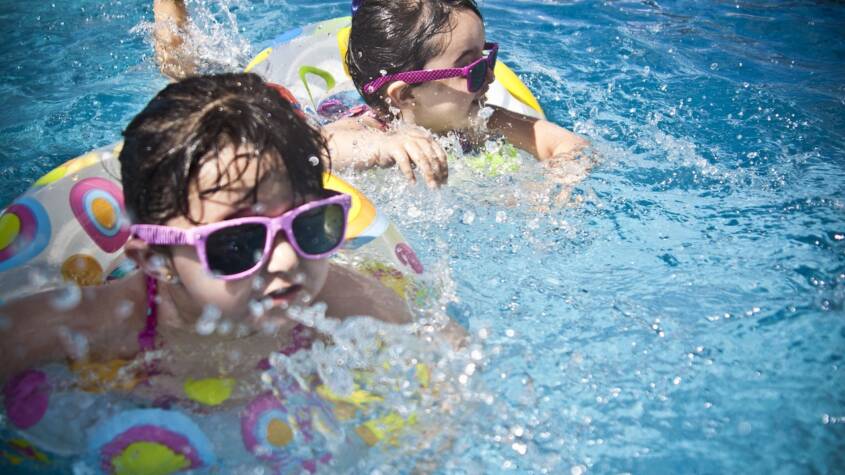
Teaching children how to swim is essential for their safety and enjoyment in the water. Swimming lessons for kids not only equip them with vital life skills but also instill confidence and foster a love for swimming. Learning to swim at an early age can help prevent drowning, a leading cause of accidental death in young children.
Beyond safety, swimming lessons provide numerous benefits. They promote physical fitness, improve coordination, and enhance social skills as kids interact with peers in a fun, engaging environment. As children learn to navigate the water, they also develop important life skills such as discipline, perseverance, and goal-setting.
Parents often wonder about the right age to start swimming lessons. Experts recommend beginning as early as four years old, though water safety courses can be introduced to infants and toddlers. By understanding the importance of swimming lessons, parents can make informed decisions that will significantly impact their child’s life.
Benefits of Swimming for Kids
Swimming provides various advantages that contribute significantly to children’s development. It enhances physical health, fosters cognitive and social skills, and builds essential safety awareness around water.
Physical Health Advantages
Swimming is a highly effective form of exercise for children. It engages multiple muscle groups, promotes cardiovascular fitness, and enhances flexibility.
Benefits include:
- Improved Coordination: Regular swimming enhances motor skills, helping children coordinate their movements effectively.
- Strength Building: Water resistance allows for a comprehensive workout, promoting muscle strength without the strain of land-based sports.
- Healthy Weight Management: Swimming burns calories efficiently, aiding in weight maintenance.
Engaging in swimming can also reduce the risk of obesity and related health issues.
Cognitive and Social Benefits
Participating in swimming lessons aids cognitive development and social interaction. Children learn to follow instructions and develop focus and discipline.
Key aspects include:
- Enhanced Cognitive Skills: Swimming activities improve problem-solving skills and concentration.
- Social Interaction: Group lessons foster teamwork and communication, allowing children to make friends and build relationships.
- Emotional Resilience: Overcoming challenges in the water can boost confidence and self-esteem.
These skills are transferable to other areas of life, supporting overall growth and development.
Safety and Water Confidence
Teaching children to swim is crucial for safety. Confidence in the water can prevent accidents and instill lifelong skills.
Important points include:
- Water Safety Knowledge: Children learn essential safety tips, such as understanding pool rules and recognizing dangerous situations.
- Survival Skills: Basic swimming lessons teach children vital skills, like floating and treading water, which are crucial in emergencies.
- Confidence Building: Mastering swimming skills positively impacts self-assurance, influencing other activities.
These safety measures ensure that children can enjoy water-related activities responsibly and securely.
Swimming Lessons Structure
The structure of swimming lessons for kids is essential for maximizing learning and safety. Key elements include assessment for proper placement, a clear progression of skills, and instructor qualifications to ensure effective teaching.
Assessment and Level Placement
Before starting lessons, an assessment determines a child’s swimming ability. This ensures they are placed in the appropriate class level. Assessments may evaluate:
- Water Comfort: Ability to float, submerge, and enter the water safely.
- Basic Skills: Skills such as kicking, arm movements, and breath control.
- Age Consideration: Recognizing developmental readiness for instruction.
Typically, levels range from beginner to advanced, allowing children to progress as they develop new skills. Adjustments can be made based on individual needs to maintain engagement and challenge.
Lesson Progression and Skills Taught
Lessons are structured to build skills progressively. Each class focuses on specific skills that align with the child’s level:
- Beginner Level: Emphasis on water safety, floating, and basic kicks.
- Intermediate Level: Introduction to strokes like freestyle and backstroke.
- Advanced Level: Refinement of strokes and techniques, as well as endurance builds.
Skill progression is often broken down into distinct milestones. Instructors might use games and drills to reinforce learning while keeping the environment enjoyable for children.
Instructor Qualifications and Training Methods
Instructors play a crucial role in delivering effective swimming lessons. They are generally required to have credentials such as lifeguard certification and specialized training in teaching children. Key qualifications include:
- Certification Programs: Training through national organizations.
- Ongoing Education: Regular workshops to stay updated on best practices.
- First Aid and CPR: Ensuring safety during lessons.
Instructors utilize diverse teaching methods, adapting to different learning styles. They often employ demonstrations, hands-on guidance, and positive reinforcement to enhance engagement and comprehension.
Sympathy Flowers: Meaningful Gestures for Comfort and Support
Sympathy flowers serve as a heartfelt gesture during times of loss and grief. They provide…








